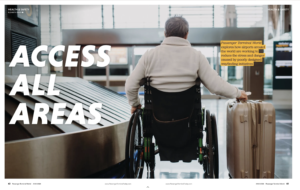The Greater Orlando Aviation Authority has officially become a Certified Autism Center (CAC), a designation awarded by the International Board of Credentialing and Continuing Education Standards (IBCCES).
Autism-friendly travel
According to the airport, this certification highlights the organization’s dedication to accessibility and to better understand and assist autistic or sensory-sensitive individuals as they travel within the USA and internationally.
“As our passenger traffic steadily increases, we have a responsibility to foster an environment where all visitors feel welcomed and comfortable in the airport’s bustling surroundings,” said Kevin J Thibault, CEO of the Greater Orlando Aviation Authority, which manages Orlando International Airport.
“We are committed to embracing a better understanding and knowledge of how to effectively communicate and provide assistance to our guests with autistic and sensory-sensitive needs, and this training for our staff will help us to better lean into that commitment.”
Orlando International also offers the Hidden Disabilities Sunflower program, which is for all hidden disabilities, including autism. A low-sensory room is in the works and will undergo review soon.
International Board of Credentialing and Continuing Education Standards
As part of the process, GOAA staff completed training on how to better serve autistic and sensory-sensitive travelers, and an on-site review was conducted by IBCCES to provide a roadmap of additional accommodations or supports that can be offered to travelers in the near future.
Myron Pincomb, IBCCES board chairman, commends the Greater Aviation Authority for their dedication in achieving the Certified Autism Center designation. “This is such a huge step toward making travel more accessible and we’re thrilled to continue our work with GOAA as they lead the way in Florida and worldwide.”
For more key insights into accessibility at the airport, read Passenger Terminal World’s exclusive feature, “How airports are reducing the stress and danger caused by poorly designed wayfinding initiatives” here.


